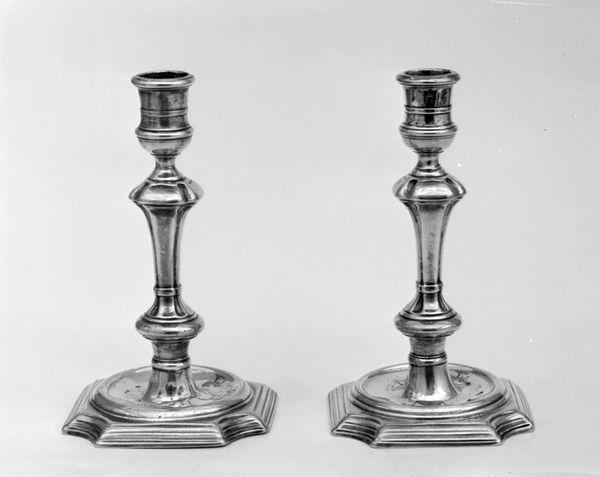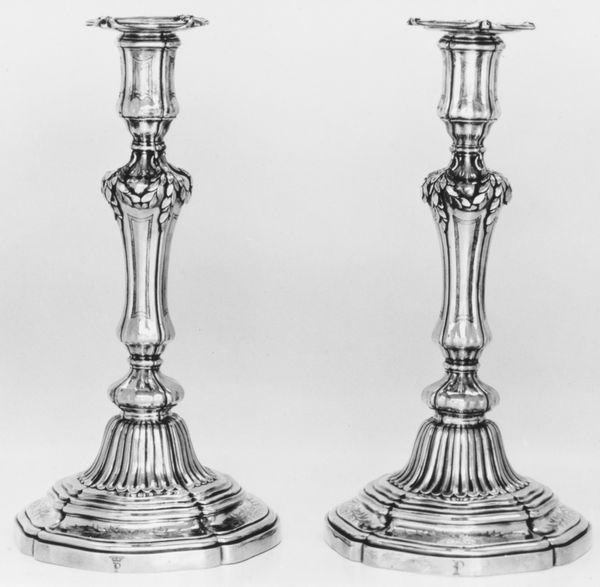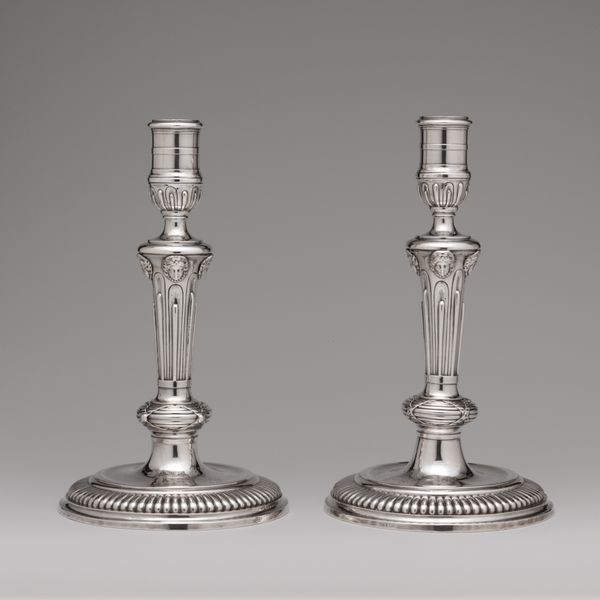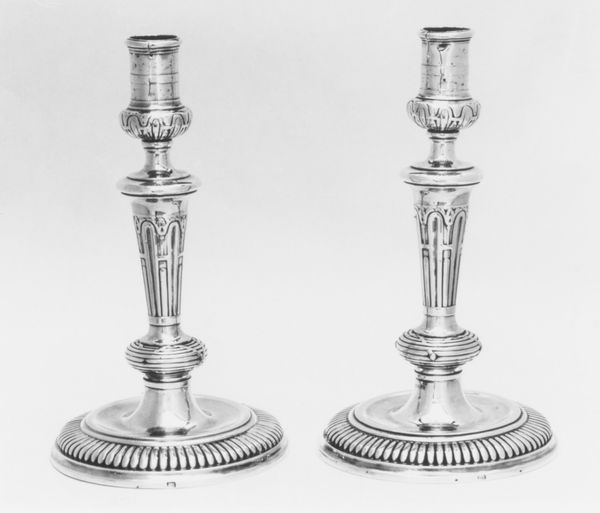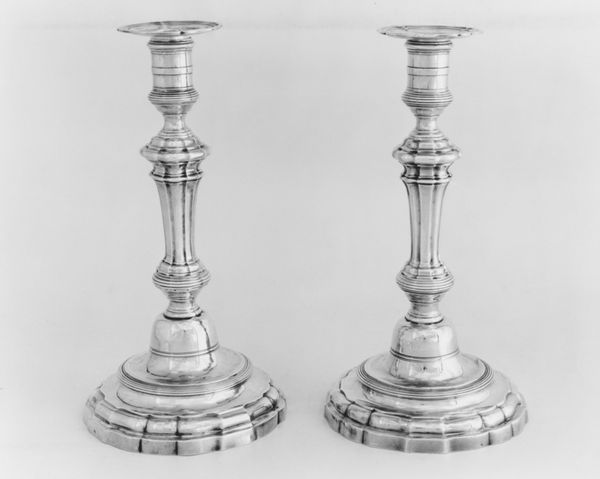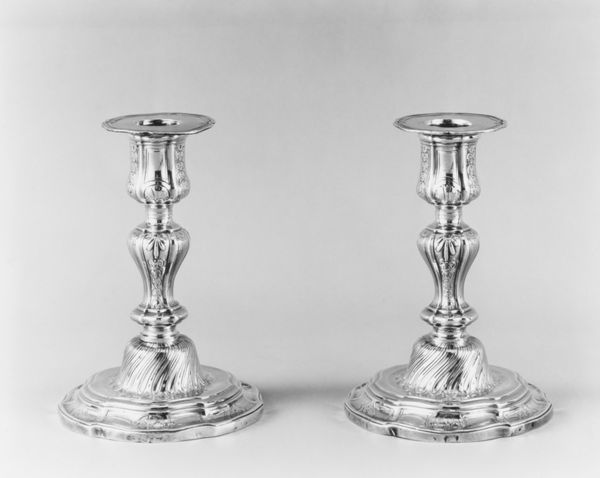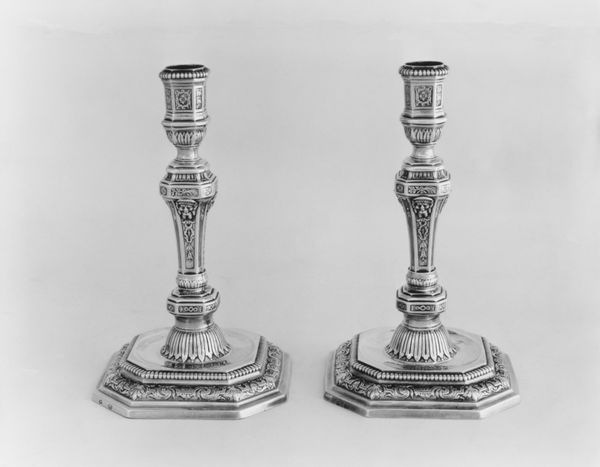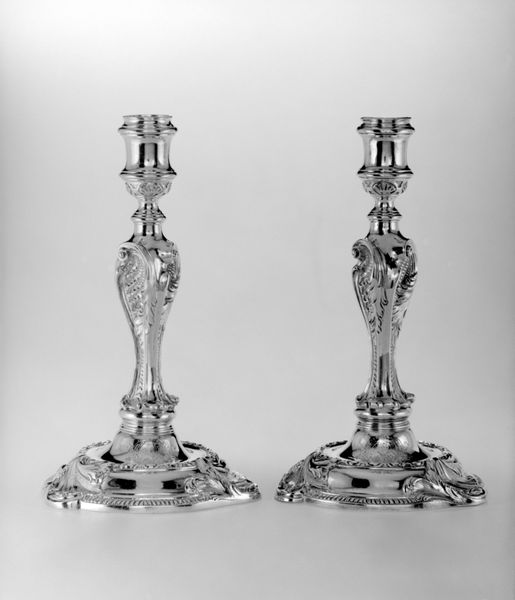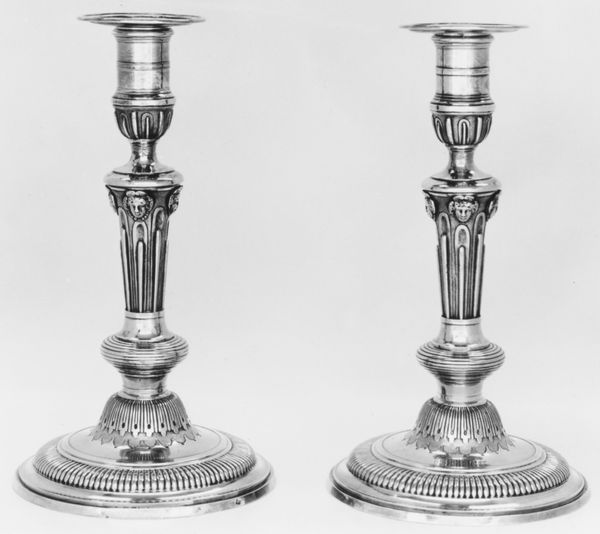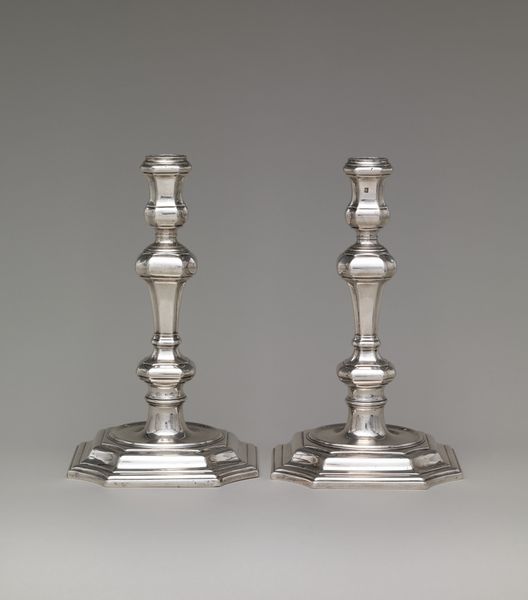
Candlestick (part of a set of four) 1701 - 1705
0:00
0:00
silver, metal, sculpture
#
silver
#
baroque
#
metal
#
sculpture
#
decorative-art
Dimensions: Height: 8 3/4 in. (22.2 cm)
Copyright: Public Domain
Curator: Standing before us are a pair of silver candlesticks, part of a set of four, crafted between 1701 and 1705 by Johann Daniel Schäffler I. They are exemplary of Baroque decorative art. Editor: They have an almost severe elegance, don't you think? The eye is drawn immediately to the play of light on the silver. Note how the craftsmanship manipulates shadow through those intricately sculpted surfaces. Curator: The social context surrounding these objects is telling. Silverware in this era wasn't merely functional; it was a potent symbol of wealth and status. Owning such pieces spoke volumes about a family’s power and social standing. Imagine the candlelight reflecting in a grand hall, reinforcing societal hierarchies. Editor: Indeed. If you examine each piece, the semiotic framework reveals itself; the circular base transitions almost seamlessly to the body before giving way to ornamentation above. This reflects not merely form following function, but reveals deliberate hierarchical divisions of geometric planes in relief. Curator: These weren't mass-produced items. Schäffler, as the artist, infused each piece with hours of skilled labor, thereby adding an immense value to it in the eyes of the patrons and of the beholders even today. Think about the workshops, the artisan culture of the early 18th century—each element embedded in the larger structures of society. Editor: And observe closely – the base employs repetitive organic shapes almost like a floral garland, counterposed to the sharp, more controlled geometry found on the neck just below the candle holder itself. It creates visual rhythm, directing upward movement with an innate kineticism—perfect for the upward directionality that flames create, themselves. Curator: Ultimately, these candlesticks embody a tension between artistry and the solidification of class structures, reflecting societal values of their time while, through form, attempting an aesthetic expression that seeks transcendent value, regardless of use or class. Editor: Quite so. The visual language speaks volumes once you decode its key structural relationships, independent of those class considerations that do inform so much of its production. Each angle, each curve contributing to a structured visual dance. Curator: Their presence encourages us to critically examine the relationships between artistic expression and the societal norms within which that art is created. Editor: I agree. A dance where metal transforms, shape informs, and art itself finds structured meaning and invites aesthetic interpretations, that themselves might speak volumes about us, too.
Comments
No comments
Be the first to comment and join the conversation on the ultimate creative platform.
